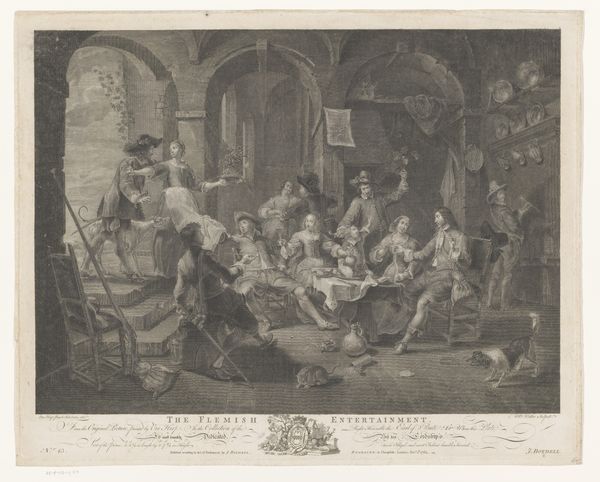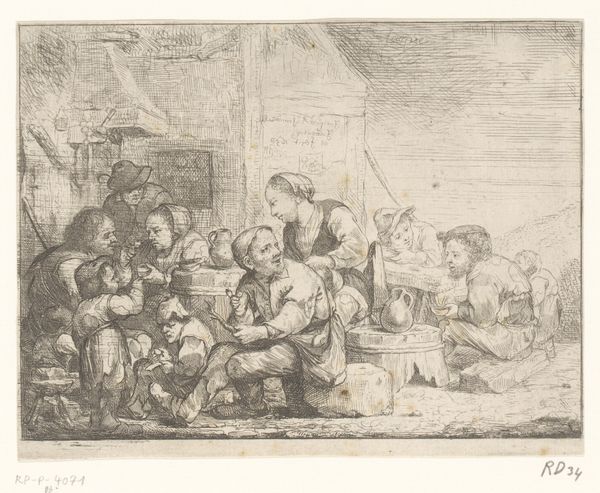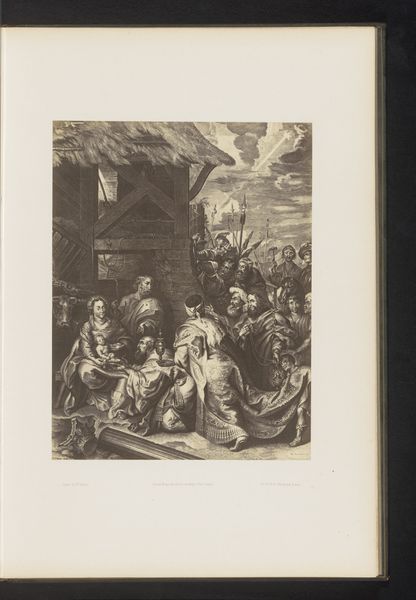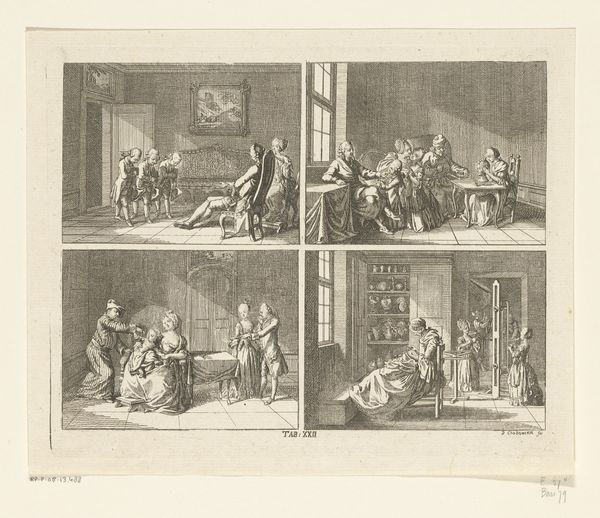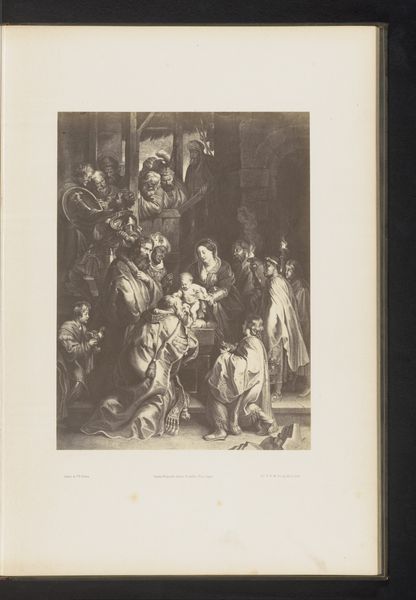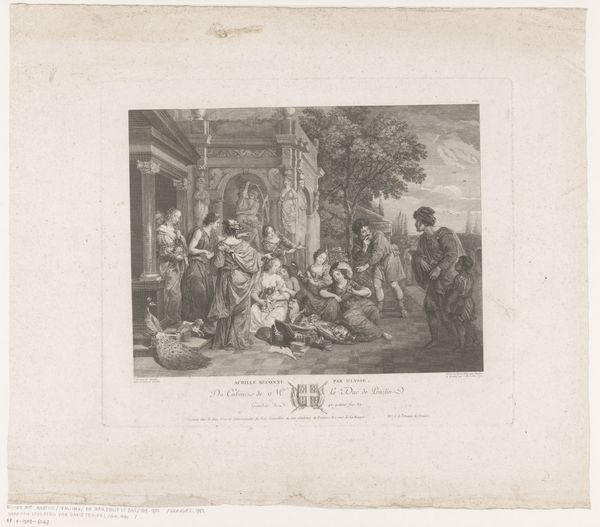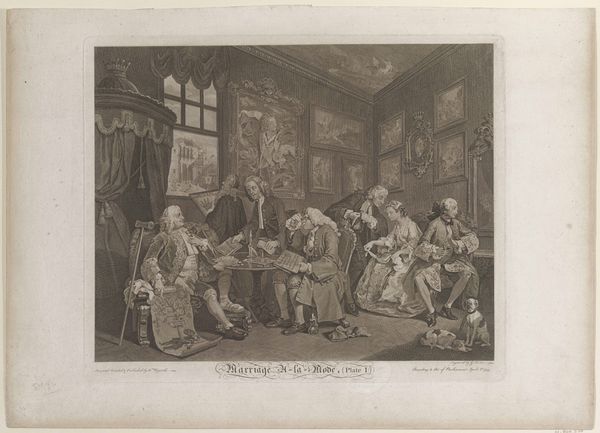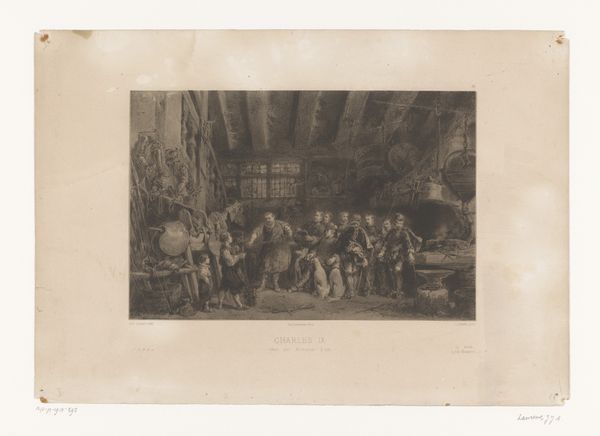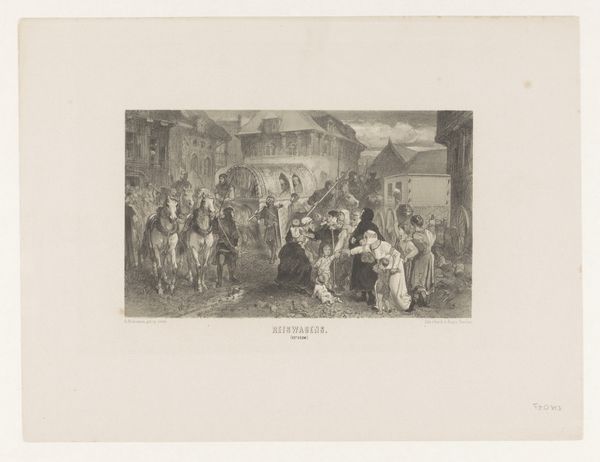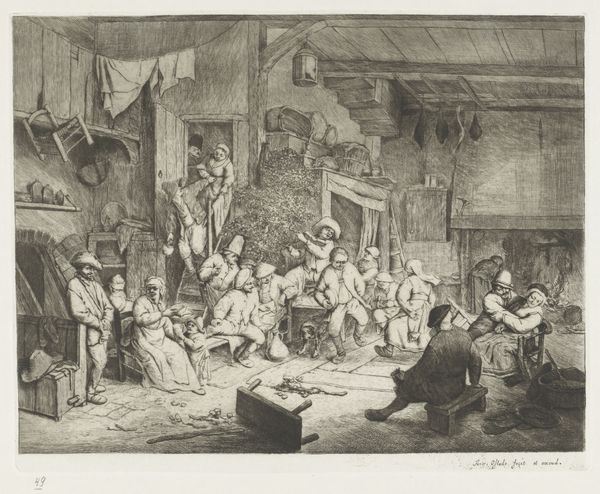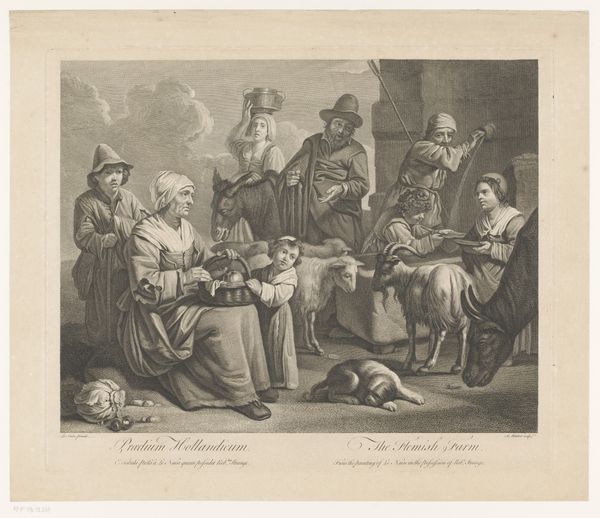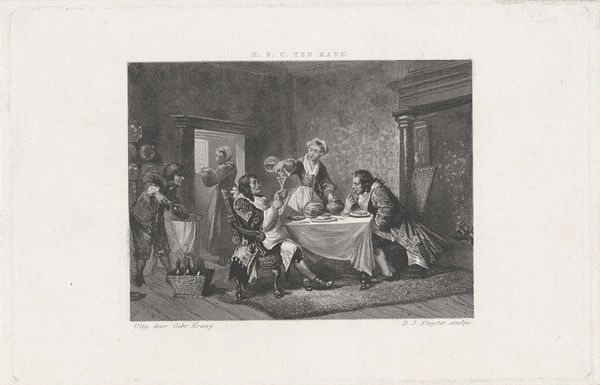
print, photography
#
pencil drawn
#
narrative-art
# print
#
photography
#
pencil drawing
#
genre-painting
#
realism
Dimensions: height 100 mm, width 146 mm, height 320 mm, width 265 mm
Copyright: Rijks Museum: Open Domain
Curator: This photogravure, made in 1875, replicates John Frederick Tayler's "Weighing of the Deer." What strikes you about it? Editor: The pallid tonality evokes a sense of faded glory, almost like a memory clinging to a specific time and place, somber. The entire composition feels very controlled, stage-managed even. Curator: Indeed. Consider the range of labor visualized here. We see men of apparent means overseeing the weighing while other figures, seemingly women and working-class men, prepare the carcass. This print mediates the act of hunting and its aftermath for a new, possibly urban, audience, removing them from the messy reality of the hunt. Editor: Hunting itself carries multiple layers of symbolism. There's the virility, dominance over nature. The slain deer can represent sacrifice, a provision for the community. It is prominently displayed, like a trophy. But also consider the inert animal among the vital canines, full of animal energy! It is a strange combination. Curator: Absolutely, there's a complex interplay. The print's medium, photogravure, makes the image more reproducible and accessible than a unique watercolor, impacting its cultural function. How it mediates social roles involved in food procurement is fascinating. Editor: There are the cultural traditions associated with hunting-- ritual, communal roles, masculinity. Each component is deeply rooted in our cultural past. Curator: Thinking about it now, this photo reproduction performs labor as well. Translating the original image into a repeatable form implicates a whole network of printmaking skills and technologies of image reproduction. Editor: I now feel quite conflicted; It triggers a visceral response, a potent blend of death and vitality; tradition and technology... Curator: Yes, understanding its composition through a lens of material process adds dimension to understanding its cultural import.
Comments
No comments
Be the first to comment and join the conversation on the ultimate creative platform.
